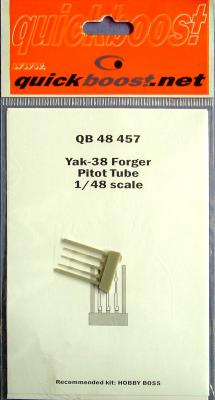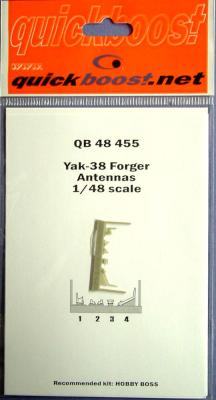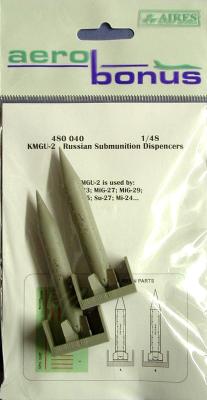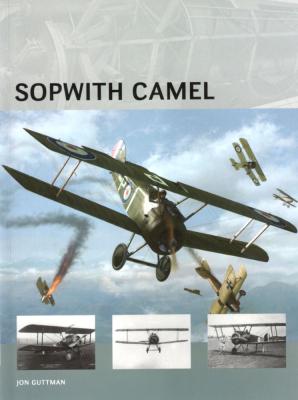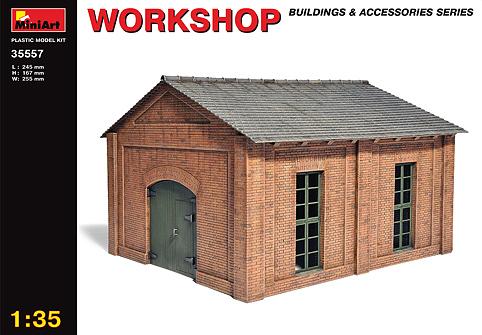As with most Soviet-designed aircraft, the Yak-38 Forger has a nose pitot tube. While not as prominent as the pitot tubes on the MiG and Sukhoi bureau aircraft, the pitot is still visibly right in front and on top of the nose. As with previous detail sets in this line, Quickboost provides multiples of the same pitot, no doubt because the pitot is one of the most vulnerable parts to damage during transport and handling. This pitot tube is noticeably longer than the one provided by Hobby Boss in their kit. After a comparison with photos of the plane, it appears that, in fact, the Hobby Boss pitot tube is too short. The Quickboost replacements are accurate in length and shape and are drilled at the tip! The part is also keyed to fit right where the kit part mounts. I have found the resin used by Quickboost to be more durable than the styrene and therefore more resistant to breakage. Highly recommended.
Welcome to the IPMS/USA Reviews site!
Introduction: The primary organization of the IPMS/USA Review website is by IPMS/USA National Contest Class. Within each Class there are sub-menus by kits, decals, books, etc. The Miscellaneous Class is for items that are not class specific or that cross two or more classes.
IPMS/USA Members: We encourage you to submit reviews, both here and to the Journal. To volunteer for membership in the IPMS/USA "Reviewers Corps" and submit your own reviews, please read the Guidelines For Submitting Product Reviews.
Manufacturers, publishers, and other industry members: IPMS/USA is pleased to offer your company the opportunity for product reviews. All product reviews are performed by IPMS/USA members, and are posted in the publicly-accessible section of our website. With very few exceptions, we perform full build reviews of new kit releases, aftermarket products, and supplies. If you would care to provide product samples for review, please contact John Noack, IPMS/USA 1st VP.
To learn more about IPMS/USA, please see our About Us page.
***Note: the packaging of this set indicates that it is antennas. In fact, the details are pitot tubes and angle of attack indicators.
The Soviet intervention in Afghanistan in December, 1979, and the ensuing 10-year conflict tested the ways and means of the Soviet military machine. As the United States military discovered earlier in Vietnam, the tactics and weapons developed for a cold war confrontation in Europe were ill-suited for a counter-insurgency. Afghanistan became the impetus for innovation. As the Soviets shifted tactics, they relied more and more on airpower, and that spawned the need for better and different weapons. One of the most effective and widely used weapons was the KMGU submunition dispenser. The dispenser was used to scatter mines not only to interdict the Mujahedeen lines of operates and supply, but also to protect the flanks of friendly ground forces. The KMGU is a reusable dispenser that can disperse either:
Thank you to Bruce Herke of Osprey Publishing and the IPMS Reviewer Corps for allowing me the opportunity to review this delightful description of the Sopwith Camel. This was a very enjoyable and informative read. I reviewed the book through the eyes of a rank novice (something I seem to be good at) when it comes to World War I aviation. I suspect many of us may have first heard of the Camel as the form-changing doghouse of Snoopy’s fantasies.
MiniArt has released a huge number of diorama and scenic kits, all designed with the scratchbuilder and kitbasher in mind. This kit is a simple unreinforced brick workshop, suitable for almost any era or location in the world that has used this type of construction technique. I have kitbashed this into a two-story custom building and changed the scale of the model closer to 1:48 (a.k.a., O Scale or 28mm for Wargaming).
This kit consists of 140 parts – vacuformed styrene brick and roof components molded in metallic grey, and the usual high quality injection-molded styrene accessory sprues molded in light grey. All vacuformed kits have flash that needs removed.











